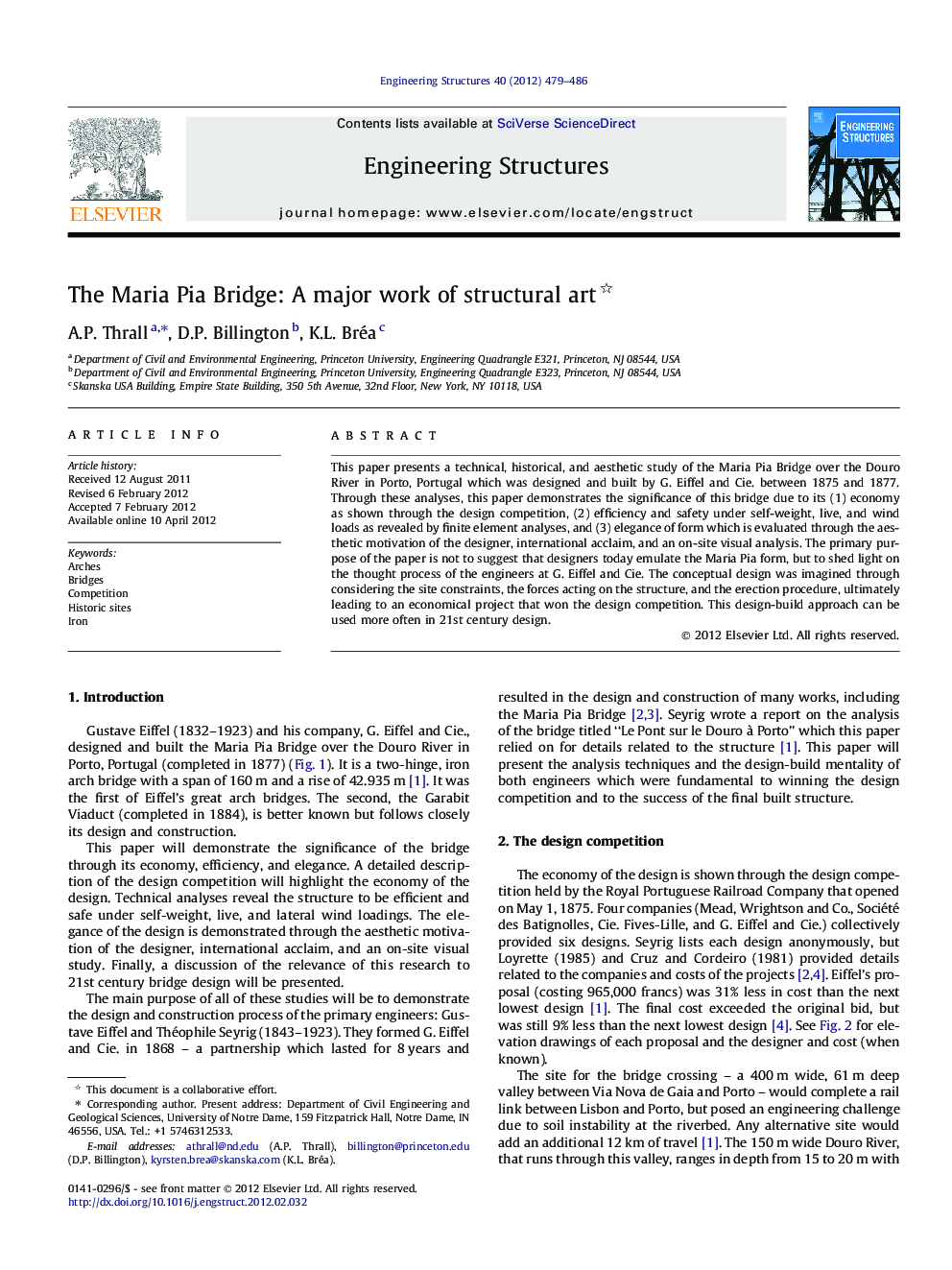| Article ID | Journal | Published Year | Pages | File Type |
|---|---|---|---|---|
| 267514 | Engineering Structures | 2012 | 8 Pages |
This paper presents a technical, historical, and aesthetic study of the Maria Pia Bridge over the Douro River in Porto, Portugal which was designed and built by G. Eiffel and Cie. between 1875 and 1877. Through these analyses, this paper demonstrates the significance of this bridge due to its (1) economy as shown through the design competition, (2) efficiency and safety under self-weight, live, and wind loads as revealed by finite element analyses, and (3) elegance of form which is evaluated through the aesthetic motivation of the designer, international acclaim, and an on-site visual analysis. The primary purpose of the paper is not to suggest that designers today emulate the Maria Pia form, but to shed light on the thought process of the engineers at G. Eiffel and Cie. The conceptual design was imagined through considering the site constraints, the forces acting on the structure, and the erection procedure, ultimately leading to an economical project that won the design competition. This design-build approach can be used more often in 21st century design.
► Technical, historical, and aesthetic studies of the Maria Pia Bridge are presented. ► The bridge is shown to be structural art for its economy, efficiency, and elegance. ► G.Eiffel and Cie.’s design-build mentality is presented as a model for designers today.
